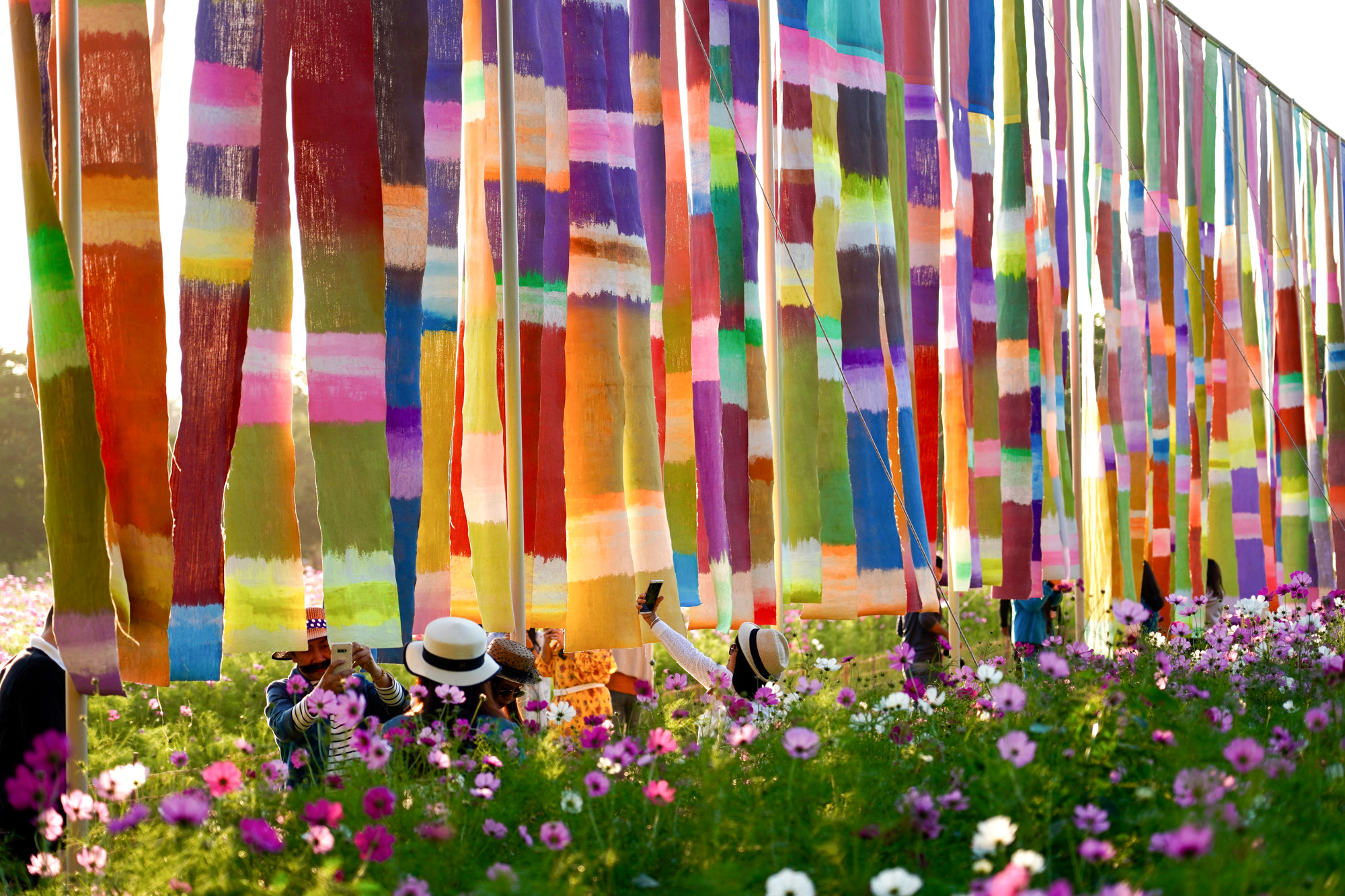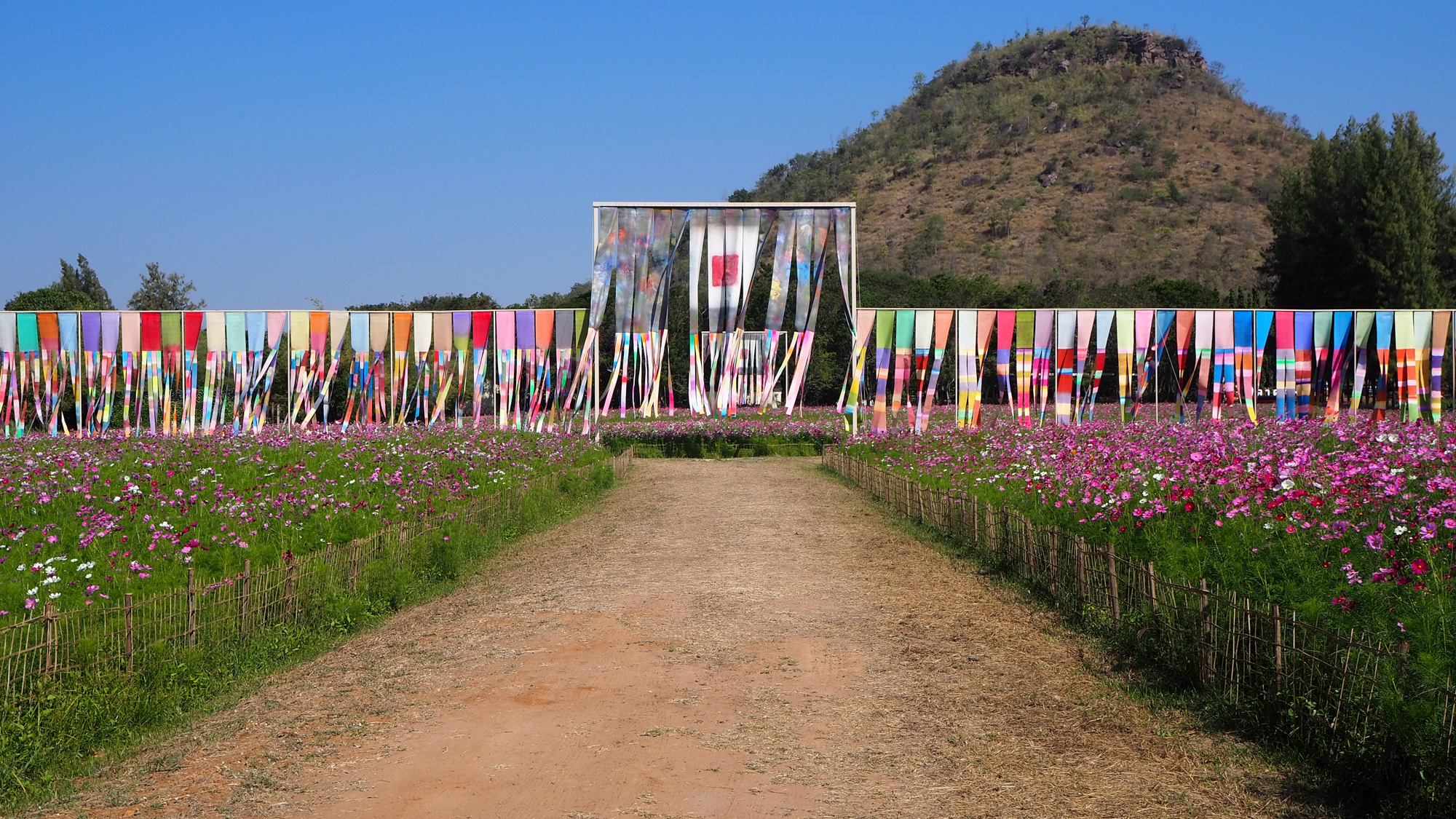Shows
Mit Jai Inn, Pinaree Sanpitak, and Savinee Buranasilapin at “Art on Farm”


One noticeable gap in Bangkok’s contemporary art scene is a lack of strong public art. But for more than a decade, Thai artists have been demonstrating their potential to fill this gap at the annual “Art on Farm” at the Jim Thompson Farm in Nakhon Ratchasima Province, a 3.5-hour drive northeast of the capital.
The setting is a mulberry plantation established to cultivate silkworm eggs by the eponymous textile and fashion brand in 1988. Since 2001, the site has been hosting year-end cultural tours for visitors, most of whom are families from the surrounding northeastern region of Isan and from Bangkok. In 2009, the Jim Thompson Art Center, led by curator Gridtiya Gaweewong, began to invite artists to produce temporary site-specific installations in and around the heritage farmhouses and temple buildings conserved at the site. In a visit to the latest rendition, held over five consecutive weekends between December 2019 and January 2020, the project proved exceptional in at least three ways: the artists’ achievements in producing some of their most outstanding work to date; the art’s strong engagement with the setting; and the atypical audience and place.

Mit Jai Inn produced five temporary installations of abstract paintings: two outdoors, and one in each of the three temple pavilions. People’s Wall (2019) was a 100-meter-long curtain of 60 paintings that spanned a mountainside field of cosmos flowers. Each of the 4 by 1.5-meter slit canvases was spray painted in stripes and blocks of Mit’s characteristic confetti colors, while a central square section of larger canvases formed a gate, as in a temple wall. The festive palette evokes old Buddhist temple murals but also Thailand’s 20th-century popular culture: movie posters, product packaging, and stage costumes.
More introspective was OOBE series (2019), a set of 20 small canvases installed on three exterior walls of a sim nam, an almost extinct regional type of Buddhist hall built on posts in a consecrated pond. Painted in somewhat somber, metallic colors, the works were cut with curvilinear flaps that hung out slightly. The title is an acronym for “out of body experience,” and the works represent the artist’s transcendentalist take on figurative paintings of the Buddha’s past lives that traditionally adorn temple walls. Collectively, the five installations form a powerful rendition of Mit’s approach to abstraction: not as an aesthetic end in itself but as a kind of journal of his utopian faith, an open-ended reflection on the potential for spiritual and societal transformation through such life practices as Vipassana meditation, community involvement, political activism, and art-making, all of which he has long pursued.

Pinaree Sanpitak’s Breast Stupa Topiary (2018), the site’s first permanent installation, was also on view. The group of eight large, dome-shaped metal trellises range from approximately 2 to 5 meters in height and 2.5 to 5 meters in diameter, representing the largest and most powerful rendering yet of the artist's signature breast-stupa form fusing the sacred and the sensual. Pinaree first defined this form in 2000, and has since then continuously explored and reworked it in various media. Here, it comes to life both figuratively and literally, swelling gracefully from the verdant landscape, planted with flowering, fruit- or vegetable-bearing vines, some of which cover the work.
Another permanent installation on display was the bamboo and steel sculpture Ligature (2018) by thingsmatter, a Bangkok-based design studio established in 2001 by architects Savinee Buranasilapin and Tom Dannecker. Taking the undulating form of three low-slung open arches, and roughly the size of a small house, this structure was conceived as a deconstructive look at Thailand's contemporary built environment. The work was commissioned as a stage for a Bangkok architectural expo that featured “vernacular” as its theme and “bamboo” in the design brief. The designers viewed this as a paradox—observing that the country’s true vernacular no longer involves bamboo but instead is all about the metal, glass, and plastic so ingeniously deployed in the roadside shops and carts of SMEs and street vendors. Bamboo, on the other hand, now calls to mind the kitschy huts of tourist traps. So, shunning folksiness, thingsmatter used computer-assisted design to render a piece of curvilinear modernism. Later exhibited at the Bangkok Art Biennale in 2018 before being moved to its current upcountry home in 2019, Ligature now stands near a century-old wooden farmhouse. As Buranasilapin and Dannecker observed, “The house, the landscape and the sculpture are equally industrial objects. The country/city dichotomy falls apart, just as Ligature will.”

But there was no need for an artist’s statement to enjoy the strong aesthetic qualities of each work, making them well suited to local audiences that might have little exposure to contemporary art. For art-interested visitors, however, the tour’s local crafts, food, music, and architecture enriched the cultural adventure, making for an unusual art experience indeed.







